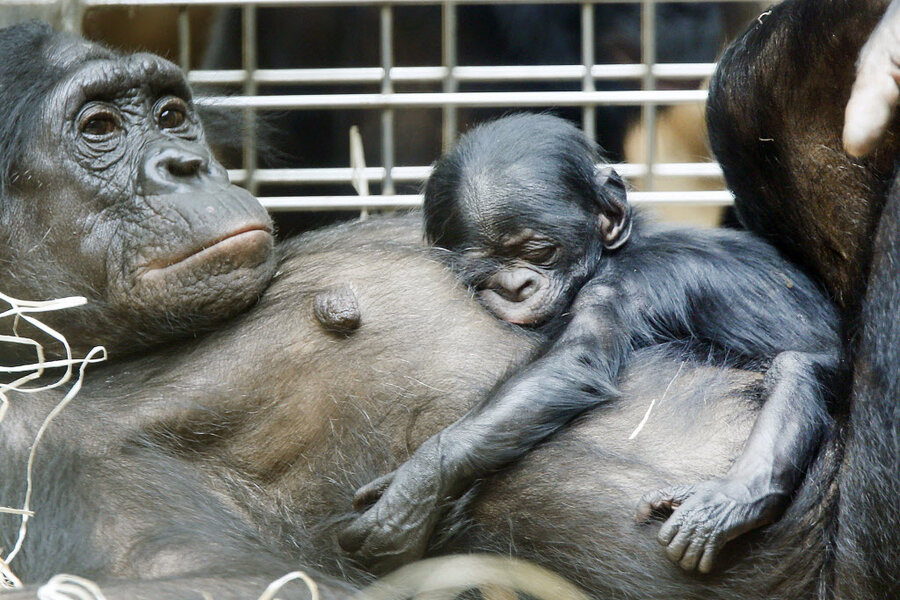Bonobos speak like human babies, say scientists
Loading...
What do bonobos and babies have in common? They both use high-pitched "peeps" to express emotions.
An international research initiative has found that bonobos, a species of great ape found only in the Democratic Republic of the Congo, communicate like human infants. Their closed-mouth peeps can take on a variety of meanings in different contexts, according to a study published Tuesday in the journal PeerJ.
In other words, the building blocks of language may predate humanity.
Along with the common chimp (Pan troglodytes), bonobos (Pan paniscus) are the closest extant relatives of modern humans. Lead author Zanna Clay was studying these endangered apes in their native Congo when she picked up on their peeps – short, high-pitched, and made with closed mouths.
Dr. Clay, a biologist at the Université de Neuchâtel, was surprised by the frequency of these calls. She and her colleagues soon realized that the peeps were used in a wide array of situations to reflect an entire emotional spectrum. In positive and neutral contexts, the peeps were acoustically indistinguishable.
"Bonobos peep in just about every context you can imagine," Clay says in an interview. "They peep when they're traveling, feeding, grooming, resting, nest building, playing, aggression, alarm – you name it. This is striking because bonobos also produce many other calls which are much more fixed in their apparent use and function."
Primates, birds, and other animals are known to use "fixed calls" – vocalizations that are specific to a context or emotional state. Bonobos bark to alarm their troops of predators, laugh when playing, and scream to display aggression. But peeps are function-flexible, making for more complex communication. Before developing language skills, human babies use similar sounds, known as "protophones."
"In humans, protophones are the building blocks of speech, in that they vary in function across different emotional states and contexts," Clay says. "This contrasts with fixed calls in human babies, such as laughter and crying, which resemble typical primate calls. The peep seems to be a rather exceptional call in the bonobo repertoire in its degree of flexible usage."
According to Clay, these calls could represent a major evolutionary transition in primate communication. The shift from fixed to flexible signaling was an important stop on the road to human speech.
"Although humans are unique in terms of our amazing speech and language capacities," Clay says, "the foundations underlying these abilities appear to be already present in the last common ancestor we share with great apes. The findings suggest the existence of an intermediate stage between fixed vocal signalling seen in most primate calls and fully fledged flexible signalling in humans."
She added, "The more evidence we gather from studies of our great ape relatives, such as bonobos, the more we learn that many capacities thought to be uniquely human actually have their foundations firmly rooted in the primate lineage."








